The First Forests
The extraordinary survival tricks of nature’s earliest trees
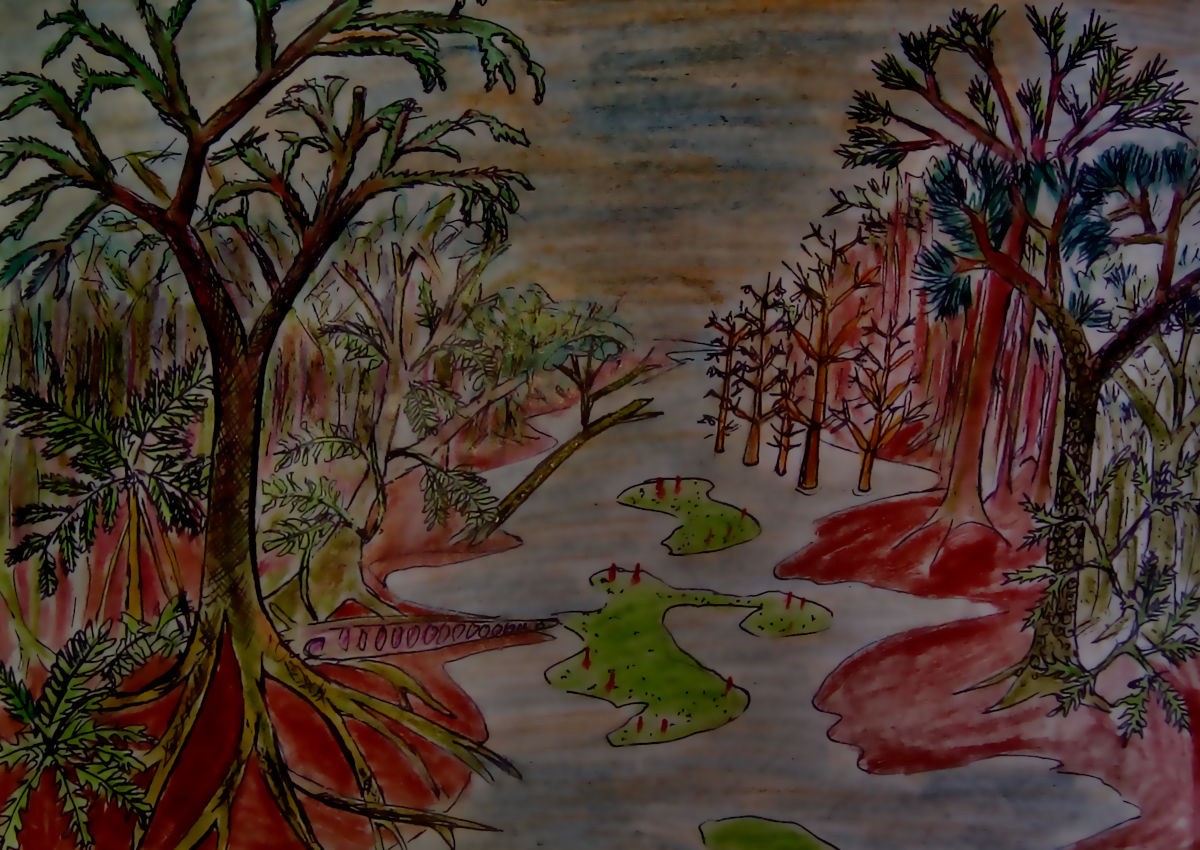
The extraordinary survival tricks of nature’s earliest trees.
If you walk through any moorland or mountain range, you will see normally noticeable plants, like trees, lichens, mosses, ferns and horsetails. As you trudge through these wide open landscapes, you will be trampling on many small and seemingly insignificant plants underfoot. But take note, because one plant family stands out. As small as the lycopsids may be, their ancestors were once mighty trees that dominated the land when almost all other life was wiped out.
Having lived through the worst mass extinctions to date, these plants hold secrets to the Earth’s deep past.
Lycopsids might be the funkiest miniature plants you could happen across. They are plentiful in the wild but easily missed, having long retreated to the background vegetation to lead a retiring existence.
It would take a true plant enthusiast to get down and inspect the ground cover comprised of so many similar plants it’s hard to tell which are which. Lycopsids are the spore-bearing clubmosses, spike mosses and quillworts. These primitive stalwarts are associated with dinosaur-age plants like ferns and horsetails, as well as earlier land plants such as mosses and liverworts.
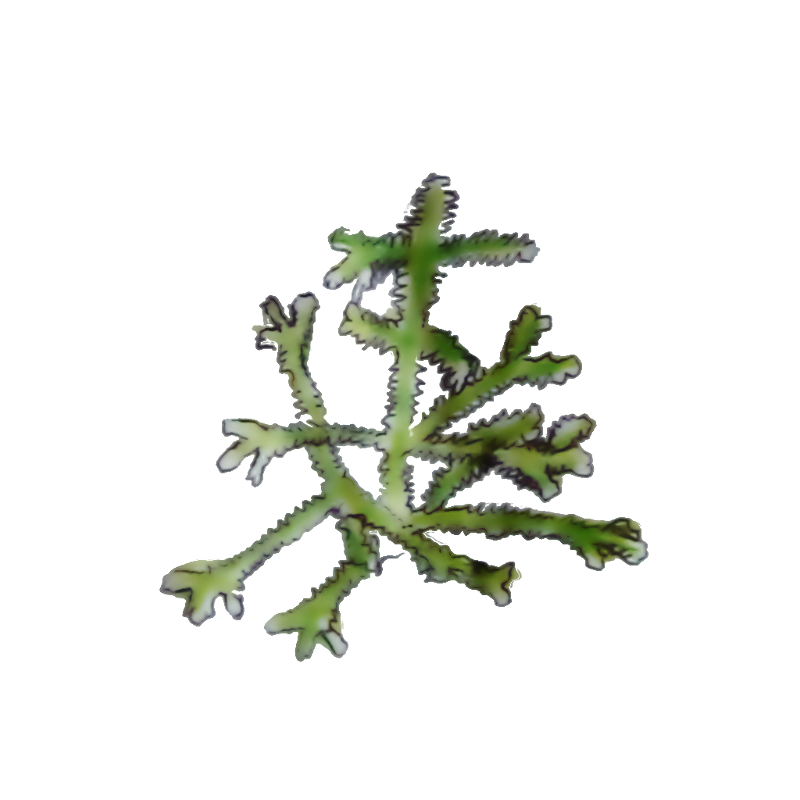
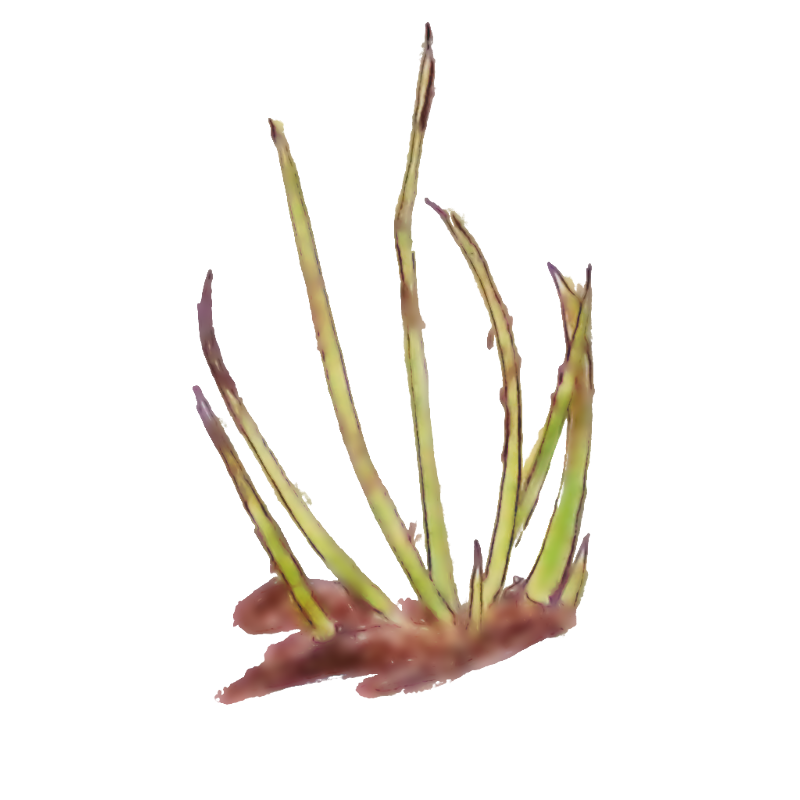
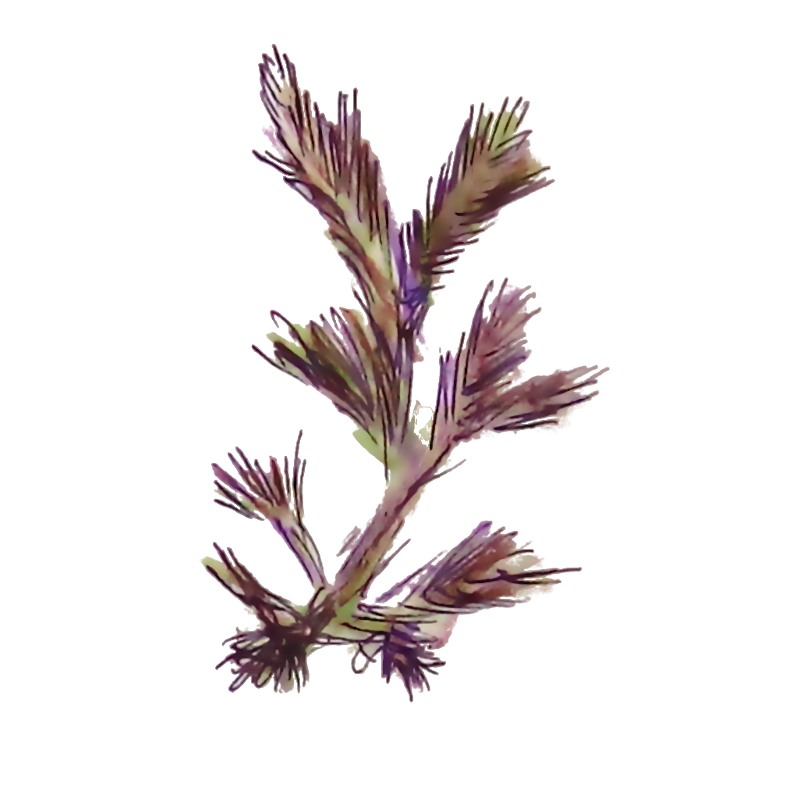
Clubmosses tend to lay low on heathlands, pushing up like miniature green pipe-cleaners with yellow strobili tips. Quillworts, their spiny cousins, are found in freshwater lakes, streams and riverbanks. Then there are spikemosses, or Selaginella, creeping and moss-like, with intricate plumes for branches like ferns. Others have plush green fronds resembling wolves’ paws. (The word ‘Lyco’ is from the ancient Greek ‘lýkos’ meaning ‘wolf’, and ‘pod’ is from ‘podion’, meaning ‘foot’). Another close relative, the staghorn, is known by its Hawaiian name wāwaeʻiole or ‘rat’s foot’.
To gaze into a dense mat of Selaginella is visually captivating — like fractal geometry. As you peer in at each different level there is a self-similarity that repeats throughout the foliage: no particular point seems more important than any other. Looking at Lycopsids gives you a sense of infinite journeying in nature. Indeed, they take us deeply back into a foreign past: the most alien landscape we will never see.
As someone fascinated by nature, I’m curious about the relationship between human society and the plant world. When I find a new plant, I look for an old use or meaning it once had in a past community, for whom the local environment was much more a repository of food, medicine and materials than it is for us today.
All plants have their superpowers and lycopsids are no exception. If you dry a few grams of clubmoss spores, disperse them in the air and ignite the dust, you’ll get a brilliant flash. This ‘lycopodium’ powder has been used for centuries by magicians to create theatrical stage explosions. The spores are hydrophobic, so if you coat your finger or any object in the powder and dip it into a cup of water, it will emerge perfectly dry. This peculiar quality has seen clubmoss spores used historically in many ways, including the manufacture of latex gloves and even condoms.
This brings me to reflect on the skills and knowledge we have ceded to modernity, but also how plants helped us to build a world at odds with nature. Lycopodium powder, for example, was used to power the first internal combustion engine, which has exerted such an influence on human history’s linear, mechanical course. However, the greatest benefit we’ve derived from the lycopsids has simultaneously been our downfall: they are the source of all the world’s coal.
Lycopsids let us reach back to an alien terrestrial past. They are the earliest land plants and one of evolution’s first attempts at creating trees. The Carboniferous coal forests stood at least 340 million years ago and covered all of present day Europe, Asia and North America. The landscapes, forged through extreme weather, were inhabited by frightening critters and some very weird plants.
Despite the planet’s tilt, there were no seasons in these tropical rainforests, and the atmosphere would have been inhospitable to any mammal alive today. The oxygen levels and air density favoured giant dragonflies with wingspans the size of seagulls and species of scorpion up to two metres long. The forest floor was continuously wet during the glacial parts of cycles; festering with the rotting plant matter of fallen trees in a peaty swamp fizzing with microbes.
The trees were only superficially like our modern species. These huge lycopsids had a diamond-patterned epidermis, more reptilian than the knotted bark textures we’re familiar with. To split the stem with an axe would reveal an inner ‘spongy cortex’, in other words, a soft plant tissue that would make lousy timber. The roots (Stigmaria) were more like branching feelers, surrounded by a cloud of rootlets, than the tough entanglements of ‘modern’ oak roots earthed deeply into the forest floor. Lycopsid trees reproduced via spores, unlike our trees, with their seeds, fruits and flowers, which arrived much later.
Professor Bill DiMichele, research palaeontologist and curator at the Smithsonian Institute, is clear that these ‘arborescent’ lycopsids were certainly trees. ‘There are many ways to be a tree, which doesn’t have to be woody, like a modern oak, or conifer. Take for example palms, or strange things like baobabs. Lycopsid trees were unique because they only had a very small central cylinder of water conducting cells (xylem), very efficient at water conduction, which appears to have been their only function’.
In the deep history of the Earth, Carboniferous lycopsids were extraordinary. They were unlike any living tree today, but shaped their environment in as much the same way, and set the conditions for many more complex life forms to come.
All modern trees ordinarily have a two-part system: phloem and xylem. The former sends the nutrients they make from sunlight down into the roots and to the points of growth (the ‘meristems’); the latter draws water and minerals from the soil to nourish the leaves and crown. Since lycopsid trees lacked abundant phloem they would have been able to transport the sugars produced in photosynthesis only relatively short distances. DiMichele describes them as giant water pumps confined to wetlands. ‘Through the latent heat of evaporation and cooling, they likely contributed to the tropical water cycle by recycling rainfall, much like modern tropical rainforests,’ he explains.
The absence of wood is striking. Their colossal frames were supported by a layer of bark and branches, coated in a waxy, waterproof chemical (suberin) that protected the trees from decay.
Perhaps not as robust as a mature oak or pine, some giant lycopsids would capsize and break off from the trunk, collapsing into the peaty substrate below. Those still standing would eventually die and fall apart. As the trees decomposed, they trapped these rich stores of carbon and sank deeper and deeper into the swamps. After much heat, pressure and time, they eventually turned into layers of coal. In coal mines, sections of bark and branch are preserved, and impressions of cells, spores and leaves are everywhere to be seen, as 100 million years of accumulated energy is routinely dug up and released in a geological second.
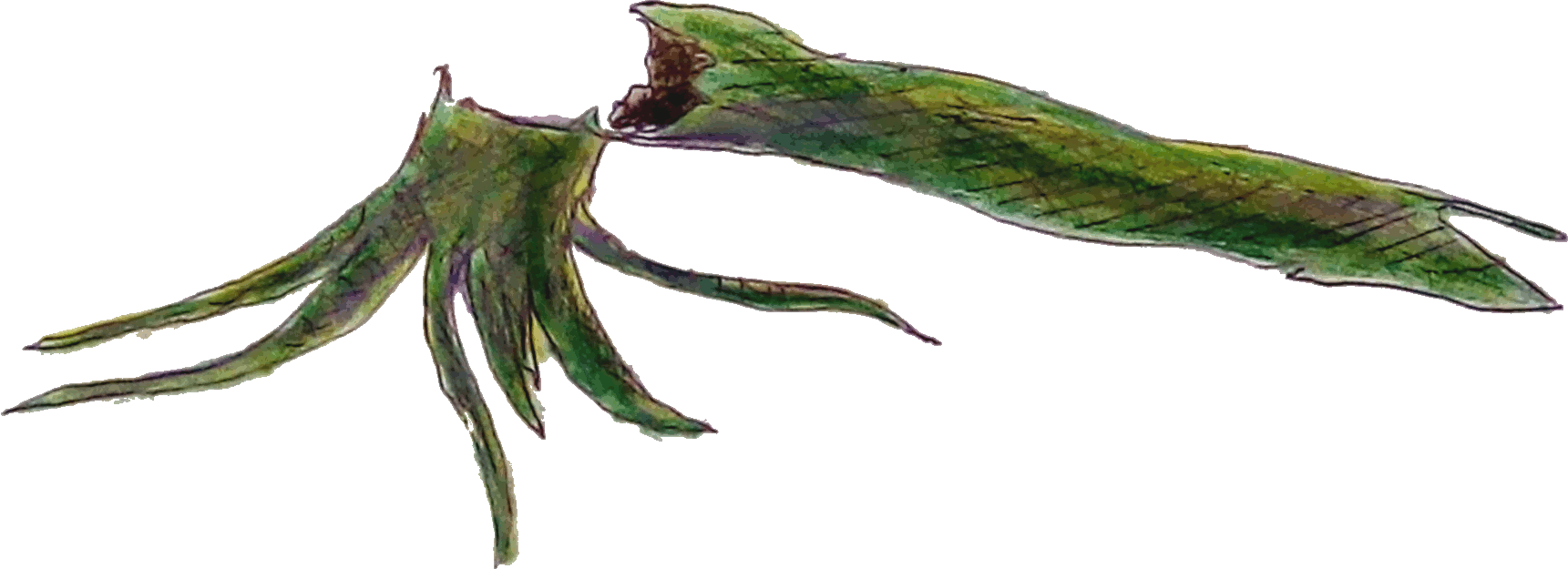
Lycopsid trees performed a vital role in the global rainforests for 60 million years, until these ecosystems succumbed to total collapse. The fossil record reveals an extinction event that occurred 305 million years ago and triggered the forests to break up into ‘shrinking islands’ that became more and more isolated from each other. The climate shifted from cool and humid to warm and arid. Plants and creatures became restricted to ‘isolated pockets’ and diminishing ‘wet valleys’, until vanishing altogether.
This begs the question: how do these forest monarchs relate to the tiny clubmosses and quillworts in our marshes today? There are several different lineages of tree lycopsids in the fossil record. But only one lineage left today, the quillworts, seems to be a direct descendant. DiMichele thinks it is most likely these lesser lycopsids evolved multiple times from larger trees, through various mechanisms that retard their growth, simultaneously regulating the timing of reproduction. ‘The little guys may have been there all along and simply survived when the big ones were wiped out,’ he said. They are specialists in surviving mass extinctions, but their limits are finite.
The Holocene presents a new set of evolutionary challenges for lycopsids. In the past 40,000 years human development has left indelible marks. As super predators, when we move into an ecosystem, we disrupt the delicate food web, replacing indigenous species and habitats. It is easy for us not to notice crucial plant life disappearing at the margins, especially those with no apparent value.
For plants with some commercial value the situation is even worse. A medicinal firmoss (Huperzia) contains huperzine, an active ingredient in health supplements which is being trialled as a treatment for neurodegenerative diseases. Individually, these plants produce a very low concentration of the alkaloid and can take many years to grow just 3 to 4 centimetres tall. In China several Huperzia species are almost regionally extinct, having been harvested in the wild at a rate far greater than it can replenish itself.
On the other hand, there are some plants that we actively protect: watch any garden owner at work maintaining an artificial imbalance between ‘weeds’ and cultivated plants. Through international seed banks we also take great pains to secure the survival of indispensable, industrially cultivated crops in case of an environmental catastrophe.
Lycopsids make terrible houseplants and they have little commercial value. It would seem that if their future is in our hands, it is not bright. Nevertheless, they have outlasted a great many other flora and they may yet have some survival tricks we are only now beginning to understand.
Dr Jeffrey Benca is an experimental paleobotanist at the Burke Museum of Natural History and Culture and a horticulturist for Amazon Headquarters’ Seattle Spheres. He has been recreating the right conditions to grow living lycopsids (ex situ) in greenhouses and laboratories, taking a step towards conserving their beleaguered habitats. His scientific objectives are threefold: firstly, to conserve lycopsids through cultivation, secondly to work with other institutes to find sustainable ways to produce the plants with therapeutic extracts, and thirdly to find out why they have been so successful over the past 400 million years.
‘Many lycopsids can be really hard to grow and some seem to die mysteriously, so I’ve been trying to find out what makes them tick. It turns out they’re not as fragile as we originally thought, but are highly stress tolerant. Paradoxically, they’re sensitive to changing atmospheric humidity,’ he said.
To understand how their past might inform their present, Benca and his colleagues went back to an apocalypse about 251 million years ago: the Permian-Triassic mass extinction.
This ‘Great Dying’ took at least a million years to destroy 95 per cent of all marine species, and critically reduce land ecosystems. For some reason, a strange group of succulent lycopsids thrived during this crisis. ‘Imagine if we woke up one morning and looked out the window, everything had vanished except for daffodils which were everywhere.
During the extinction these lycopsids thrived and completely took over. What would have caused that?’
There are many theories about what caused the Great Dying. Scientists mostly agree it wasn’t a single cause but a combination of ‘trigger events’ that destroyed food webs from the ground up. But one possible explanation for the disappearance of forests coinciding with malformed fossilised pollen stood out.
As a student at the University of California, Berkeley, Benca and his research team put a hypothesis to the test: ‘could volcanic eruptions have eroded the ozone layer, letting in harmful ultraviolet-B (UV-B) radiation that that made plants infertile, except for these lycopsids? In a series of experiments, both modern conifers and lycopsids were exposed to high levels of the radiation in growth chambers and the effects were compared.
The results of the conifer study were conclusive: the pollen produced by irradiated seed plants were malformed (just like the fossilised pollen from the mass extinction) and the conifers were completely sterilised. Benca is now analysing results from the lycopsids in the hope of resolving the mystery.
As the undisputed masters of surviving mass extinction events, lycopsids paved the way for our era, the Holocene, supporting the evolution of all eventual terrestrial life, including us. The destructive world they helped us to build — with their combustible spores and enormous coal deposits — is closing in on them, as we shrink their habitats, barely noticing as these once magnificent, now tiny primordial forests disappear without a trace.
But before that final loss, should an environmental disaster erode the fragile ozone layer, leading to the destruction of our remaining trees and ecosystems, it would not be surprising to find lycopsids making a giant comeback.
Curious for more? Sources and references for this piece can be found here.